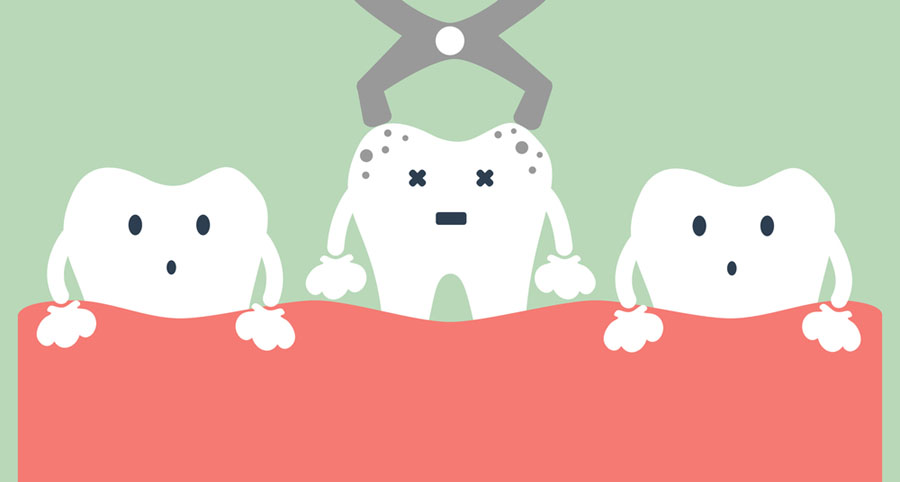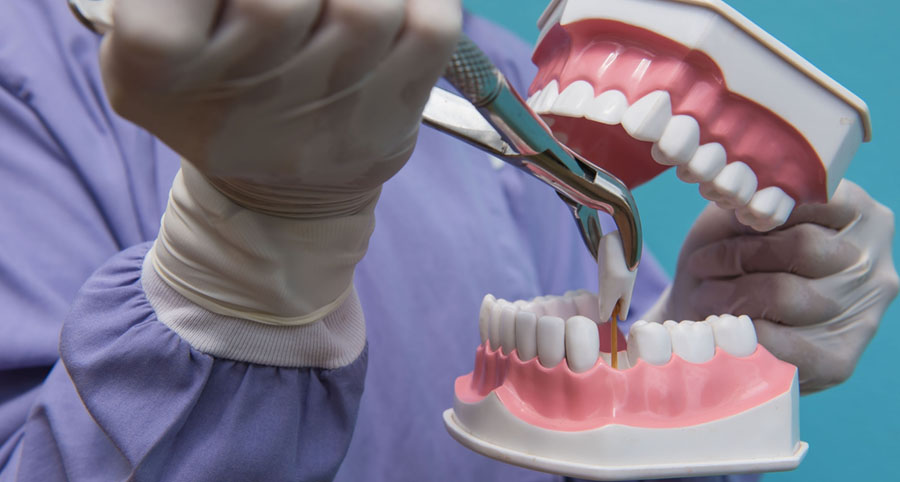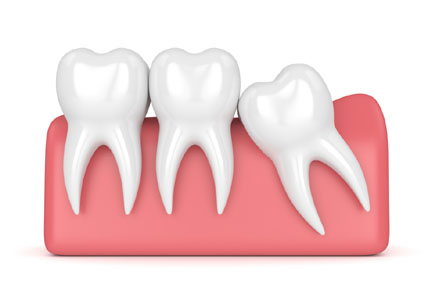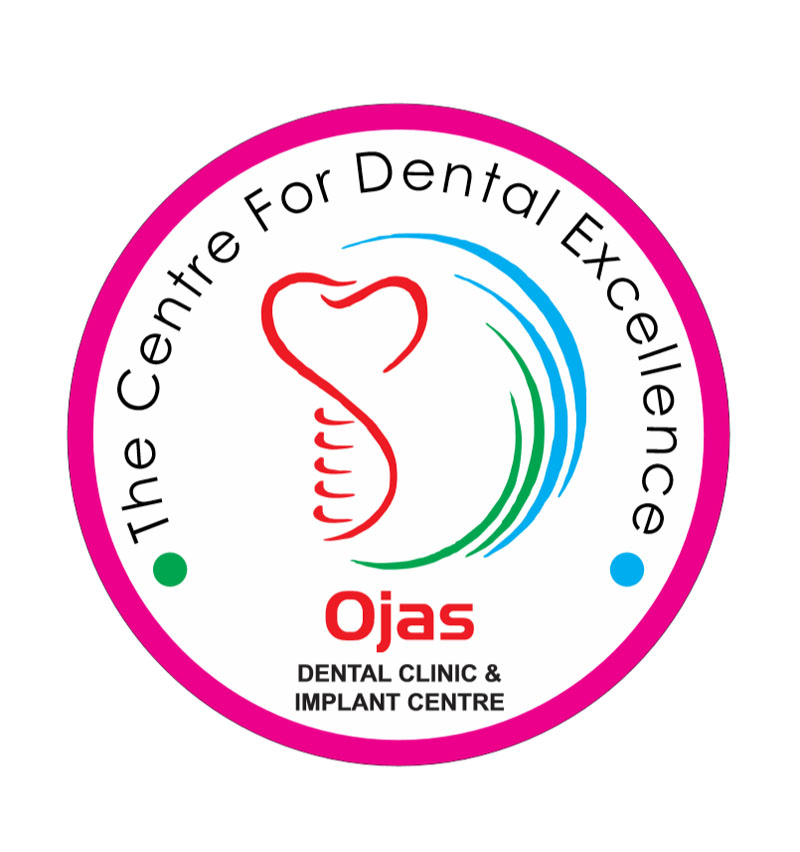
Tooth extraction is the forced removal of a tooth, using forceps, from the dental alveolus or the socket in the alveolar bone (alveolar bone is the bone with sockets surrounding the roots of the teeth), due to various reasons such as:
tooth decay
tooth damage
overcrowding of teeth in the mouth
tooth not able to erupt through the gum
baby teeth not falling out in time, to make way for the growth of permanent teeth
a patient requiring radiation to the head or neck, due to certain medical conditions, and may need to have the teeth lying in the areas of radiation extracted
impacted wisdom teeth which cause gum pain and swelling
It is advisable to consult with our dentist if you face any of the above problems.

Prior to extracting your tooth, the dentist will take the details of your full medical history, especially your dental treatment history, if any, along with a list of the medications that you take.
You need to especially mention if you take any blood thinners or are allergic to any medicines.
The doctor may prescribe some antibiotics that you may have to take prior to the extraction.An x-ray will be taken to determine the best way to extract the affected tooth.
The doctor will ask you to refrain from smoking, at least, a day before the procedure, as smoking might lead you to suffer from a dry socket and alveolar bone exposure after the extraction.
On the appointed day the dentist will give you local anesthesia to numb the affected tooth and its surrounding areas.General anesthesia, though rarely necessary, may be required in certain cases of wisdom teeth removal. For such a procedure you will need to be admitted to a hospital, though you will be able to go home on the same day.
There are two types of tooth extraction procedures, depending on the condition of the tooth:
Simple extraction - In this procedure, after the tooth and the surrounding areas become numb, the dentist loosens the tooth with an instrument called the elevator. The elevator helps to break down the tissues supporting the tooth and expand the bony socket which holds the tooth. The dentist then easily pulls out the tooth using a pair of forceps.
You may feel some amount of pressure when the dentist pulls out the tooth, but no pain.
The dentist will place a gauze over the socket and ask you to bite down on it to stop the bleeding.
Surgical extraction - Surgical extractions may be necessary for:
During the procedure, the dental surgeon makes a small incision on the gum to access the affected tooth. If the tooth is too large the surgeon may break the tooth to small pieces to remove it. For a tooth which is impacted, the dental surgeon will cut away some gum and bone tissue, then use forceps to rock the tooth, loosen it from the jaw bone, and finally pull it out.
In certain cases, post the surgery, the dentist may bring the gum edges together and stitch them. The stitches dissolve automatically in a few days. A blood clot usually forms in the socket after the surgery. The dentist will put a gauze over the clot and ask you to bite on it till the bleeding stops.

Some dos and don’ts after a tooth extraction include:

If a baby tooth is extracted, a permanent tooth will grow in its stead. If a permanent tooth is extracted, it will never grow back.
If you wish, you may replace the missing tooth with an implanted one. Your dentist will be able to let you know about your options.

